| Welsh W.T. 501 "Peanut Tube" | ||
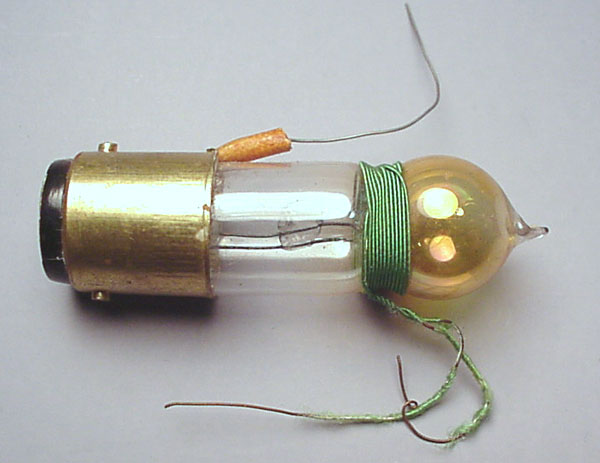 |
||
| The Welsh type W. T. 501
"Peanut" tube was introduced in 1923. It was very similar to the
Delta tube, and was a "gridless
triode", that is, an attempt to bypass the DeForest grid patent by
positioning the control electrode outside the glass envelope of the
tube. The tube cost $2.00, and a socket cost an additional 40
cents. Some tubes were marked as the "Welsh Relay Radion".
These tubes are just over 2 inches long, and about 1/2 inch in diameter. The Welsh tube came with a length of wire that was wrapped around a narrow part of the tube. Inside the tube was a filament and a "plate" electrode, which was just a piece of wire bent into a helix. When connected in the circuit as recommended, both ends of the control wire were connected together, so any effect it might have had on electron flow between the filament and the plate was due only to some slight capacitive coupling. The tube was sold primarily as a replacement for a standard crystal detector (galena crystal and cat's whisker) and was supposed to offer improved performance. It was probably more stable, and required less adjustment, but the sensitivity was probably not much different. It was heralded as "The Tube the Cannot Squeal". The squeal that they refer to is the oscillation of an improperly adjusted regenerative detector, and was something that could only happen with a tube that could amplify. The Welsh tube, and its brethren, had very little (if any) ability to amplify a signal, so in the great tradition of the advertising art, its major failing was spun as its major selling point! It could, with a suitable socket adapter (75 cents additional) be used to replace a standard grid-type tube. There seems to be no logical reason to do this, other than price. It would be considered "reverse hot-rodding", or something akin to putting a Model A engine into a Mustang. |
||
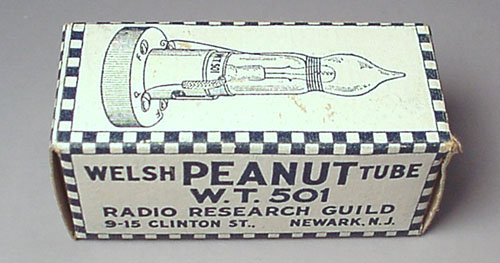 |
||
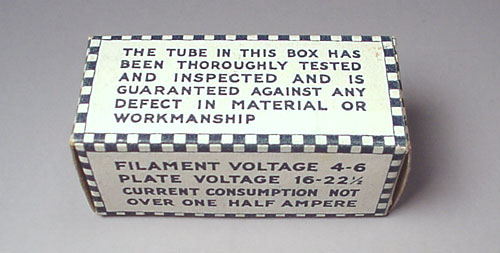 |
||
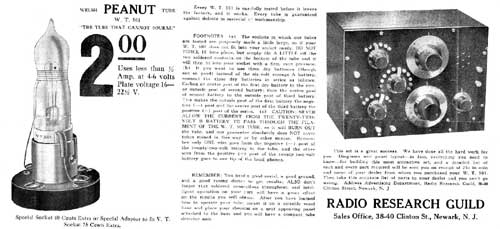 |
||
| Shown here are the front (above) and back (below) of the Welsh Peanut tube instruction sheet. Click on either image for a much larger version of each. | ||
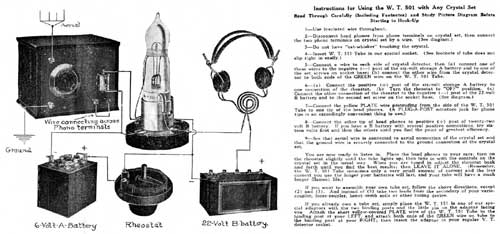 |
||
| Home |